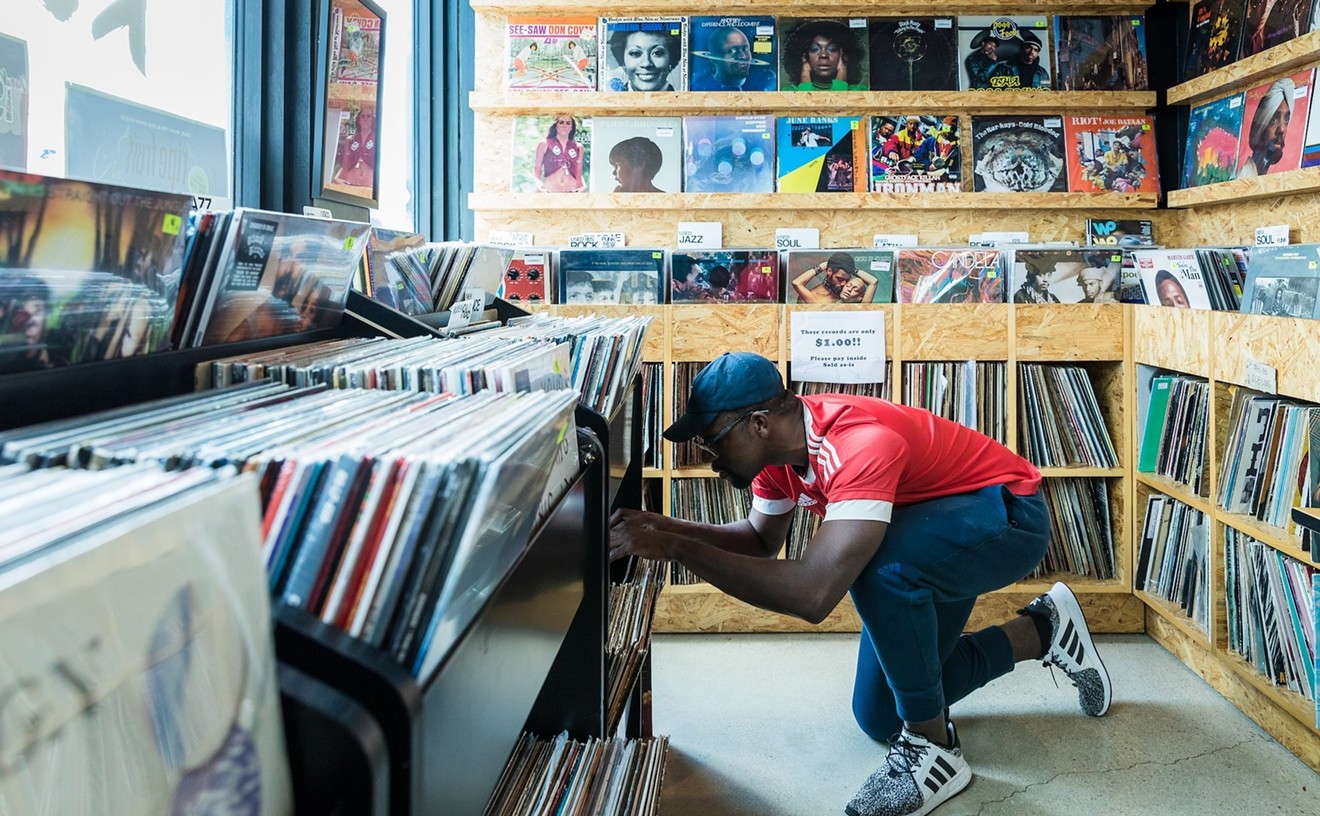There, near the corner of Davie and Griffin roads, Big Boy holds court over a shady grove of his smaller brethren. The monster melaleuca has survived vandalism, hurricanes, and encroaching real estate development and shows every sign of robust health. In 1953, according to one press account, the tree measured 12 feet, 2 inches around. Today, its circumference is 20 feet, 3 1/2 inches.
"One old-ass tree," says Sean Alan, part of a posse of teenage neo-Druids who inhabit the park by day. Alan, who says he quit going to school three years ago, moves his lips when he reads a plaque at the base of the tree. The plaque, covered with graffiti and Silly String, credits Davie pioneer John Lange with planting the tree and puts the date at "about the year 1900." Big Boy purports to be the oldest melaleuca in America.
When an aging opera singer donated three acres for the park in 1971, nature lovers would sometimes motor out from Fort Lauderdale to enjoy the flowering melaleuca grove. Today visitors are few and far between, because melaleucas have become pariahs. Until eradication efforts slowed them down, the silvery-white invaders took over as much as 50,000 acres of wetlands per year, choking out native plant species, soaking up too much Everglades water, and giving a few people severe allergies. The most visible signs of the silent onslaught lie around West Palm Beach, where wet prairies have given way to hundreds of acres of melaleuca forest.
"Never seen it," professor Ron Jones says of the first melaleuca. Jones is director of the Southeast Environmental Research Program at Florida Atlantic University and lives in Davie not far from the huge tree. "If I did, I would probably feel compelled to kill it."
Dan Thayer, director of vegetation management for the South Florida Water Management District, is no less hostile: "This is the big, bad mother that infested the Everglades."
Even Davie park ranger Mark Richmond hates melaleucas: "My idea is, cut 'em all down."
Sue Gillis, curator of collections for the Fort Lauderdale Historical Society, maintains a more circumspect posture. The human history surrounding the melaleuca is ironic, and somewhat murky, she notes. "In the old days, it was hailed as a great thing that was going to solve all our problems. There's this abrupt about-face later on, when suddenly no one wanted to admit they had planted them. It's a metaphor for many things, I guess."
The melaleuca's march toward political incorrectness began in 1980 when scientists raised alarming facts about the trees, chief among them the idea that exotic species generally decrease biological diversity anywhere they grow. The melaleuca's sinister side has since been well publicized and taken root in the public mind.
In 1990, regional public agencies launched a full-fledged melaleuca eradication program, which by Thayer's estimate now spends about $4 million per year. At first the combatants tried chain saws and fire, which only hastened the melaleuca invasion -- the trees release millions of seeds if cut or burned. The weapons of choice now include pesticides and imported predators like beetles, which officials say are working much better. Robert Doren, assistant research director at Everglades National Park, calls eradication efforts "very successful" and believes total annihilation of the melaleuca is a realistic possibility, though he won't estimate when.
Meanwhile, Gillis points out that almost all the information on the plaque could be erroneous, but she's had a hard time getting to the bottom of it. For example, Davie was largely underwater in 1900, making such an early planting unlikely. And the tree probably wasn't planted by John Lange, as Lange's daughter believed. A likelier suspect is a University of Miami forestry professor named John Gifford. Gifford wrote an article for American Forestry magazine in 1910, describing how he had received some melaleuca seeds enclosed in a letter from Australia three years earlier. In 1940, after hyping the tree for decades, he wrote himself a pat on the back in the same magazine:
"No one can predict what will happen if he drops a seed from a foreign land in a new environment. If it happens to be a weed, he may regret it, but if it is an ornamental and useful tree, he has done well for himself and posterity, especially if, as in this case, it meets with popular approval."
Gifford's pal, Frank Stirling, became the Johnny Appleseed of melaleucas. The late Davie mayor and state legislator thought the trees were the solution to draining the Everglades and establishing a new regional lumber industry. His son, Hully, did him one better: In 1936, partly as a political stunt, he flew over the Everglades throwing handfuls of melaleuca seeds out of the cockpit.
In hindsight the Stirlings' enthusiasm makes biologists groan. So does the enduring presence of Big Boy, who now tops out at approximately 100 feet in height and whose life expectancy is unknown. Thayer, the South Florida Water Management official, thinks the park should be radically redesigned. "It should be ground zero in our educational efforts," he says. "There should be a whole display set up that describes the history of this nightmare." As for the aging outlaw: "Knock it over and erect a new plaque that says this used to be the oldest melaleuca in South Florida."
Davie town arborist C. Way Hoyt thinks this is a poor plan. "Would I recommend bringing the melaleuca in again? No, of course not. But I happen to think it's a cool tree. It gets blamed unfairly for mankind's insistence on changing the environment. King Kong wasn't a problem until they took him off his own island.










